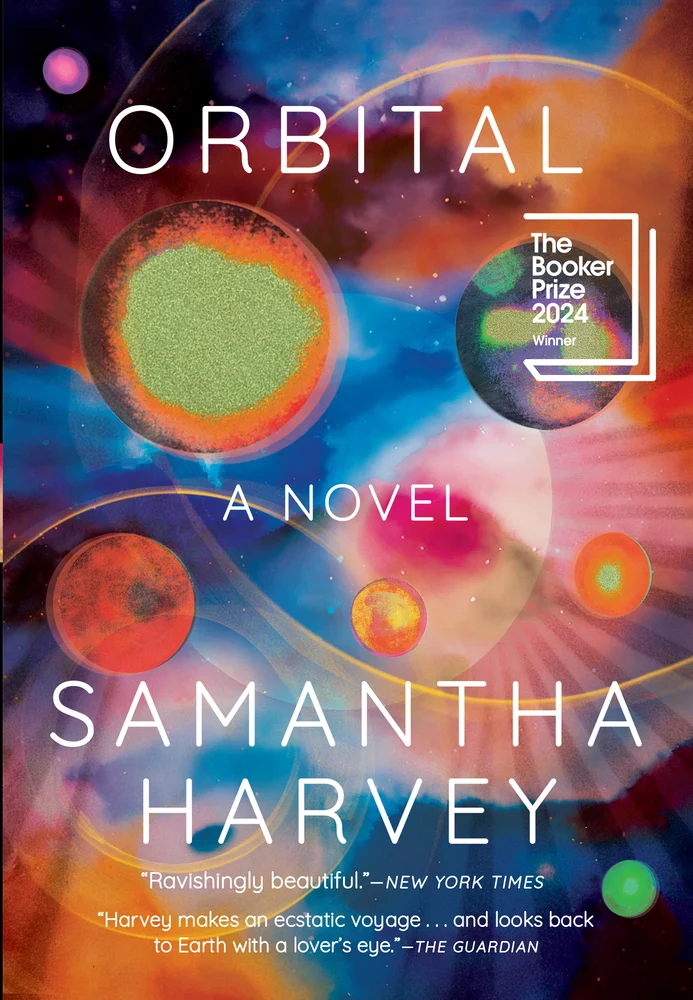Reviewed by

In 1964, Justice Potter Stewart defended the First Amendment right of movie theaters to show a French art film called The Lovers. With characteristic candor, Stewart wrote that he knew the film was not pornographic because even though he couldn’t strictly define such material, he could say, rather famously now, “I know it when I see it.” When he saw The Lovers, he didn’t see “it,” that “hard-core” obscenity; he saw art. I envy Stewart’s certainty, his uncannily astute powers of perception. I can’t always claim that I see the clear line between art and obscenity, or the times in which art, for art’s sake, justifies the dubious means of its creation. Lidia Yuknavitch’s The Small Backs of Children is merely the latest to leave me wondering about art and the blurred lines it creates.
The Small Backs of Children begins in an unspecified and war-torn region of Eastern Europe, where a photographer on assignment snaps a shot of a young girl fleeing her home an instant before it and her family are “atomized” in the fireball of an artillery strike. It doesn’t take long before the photographer and her photo achieve fame and acclaim in the West. But the photo’s object, the now orphaned ten-year-old girl, is ignored by most of the wider world; only one wealthy American writer, enamored of the photo, obsesses over the orphan and her fate. When the Writer falls ill, her group of artist friends—identified only by their profession (the Painter, the Poet, etc.)—bands together to locate and save the orphan in the hopes that it will restore the writer to good health. Unbeknownst to the writer, we learn that the girl has come under the care of a local widow whose collection of art and poetry inspires her to pick up painting. When the artists discover the orphan, she agrees to go with them, to be collectively raised by the group, but nothing after this point in the plot is certain; five of the six final chapters offer different, conflicting endings—the adult version of a choose-your-own-adventure—and the readers get to watch Yuknavitch try out all the different possibilities.
If the description of this plot seems a bit precious or far-fetched, that’s probably because plot is not Yuknavitch’s focus. Small Backs is not a traditional work, but an experimental, semi-autobiographical intellectual journey. In it, we often don’t empathize with the characters, but use them as the medium through which to consider ideas and philosophies. The photographer’s use of her photo, without an attempt to address the human suffering in its foreground, immediately raises interesting ethical questions: What is the purpose of art? Where does the responsibility to create art end and the obligation to help others begin?
The parallels between this fictional photo and the shot of the Syrian refugee boy dead on the beach this past summer—or between it and Kevin Carter’s 1994 Pulitzer-winning photo of a starving Sudanese child and a patiently waiting vulture—are striking. We find ourselves torn between valuing the photograph for what it makes us feel and wanting to turn the lens back on those who took it. Why aren’t these photographers offering the subject of their photos aid? Are they truly interested in increasing awareness and support or is that goal incidental to boosting their own reputation?
Yuknavitch’s answer comes down thunderingly in defense of art creation—and very satisfyingly. She establishes art’s importance immediately; long before the American artists discover the girl, we find ourselves moved by her, who, even as she flees from man-made violence, develops into a young woman simultaneously grappling with trauma and her burgeoning sexuality. Making art becomes the only way for the orphan to resolve the tension between these two very different forces, leading her to conclude, quite didactically, that “human expression is the highest value in life.” Yuknavitch seeks to prove this pseudo-thesis, in part, by marrying sex and art through the body, fearless of accusations that her prose might be obscene. No distinction exists between art and pornography; the two can be the same, especially in the name of creating beauty or finding peace. The Painter, stuck in a marriage he can’t tolerate, takes out his frustration on his body and his canvas, covering himself in “onyx, Alizarin crimson, Prussian blue” and “assaults the canvas” with his semen, with his blood. The orphan finds peace from her mental and physical suffering in painting giant abstract faces on the side of a barn, faces of pain and anguish and deadness; her menstrual blood, triggered too early by violent rapes before the story even opens, is the paint of her works. And years and years later, in one of the possible endings, the Painter and girl meet, in an orgy of both art and sex: “every other organ or opening is simply an extension or metaphor…biting, scratching, tearing, cutting…they paint together with blood. Four days. A bloody, messy lovemaking. That’s the scene.” These moments will haunt your mind for weeks to come, an exclamation point on the right to own one’s body. The union of the two worlds offends all standards of civility, but stands proud and right, vital to these people. Deny them this union, the novel challenges you, secure in the uncomfortable beauty of its powerfully evoked scenes.
These moments of destructive creation, fueled by sexuality, with which the novel abounds, buttress the novel’s stated focus from the beginning: “This, reader, is a mother-daughter story,” a story of reclaiming womanhood. And then again towards the novel’s end, with another fourth-wall breakdown: “Blood driving her sexualized body… You wish I would stop speaking of all this blood, but I’m afraid it’s the point… Just once, the story will keep its allegiance to the body of a single woman.” Yuknavitch pushes her political message by using her own life as a model for the Writer’s; both were sexually abused by their fathers and ignored by their alcoholic mothers, both struggled with drug addictions, both got PhDs, and both now live more comfortably with a filmmaker husband and son. Nearly all the key relationships of the novel are between women, and most of the men are reduced to a role of violence, sexual or otherwise. In a setting and world brutally dominated by men and populated by female characters who have been abused by these men, art emerges as the only possible outlet of justifiable, feminine anger. To complain that certain moments in the book are uncomfortable or gratuitous not only brings to mind the maxim “Well-behaved women seldom make history,” but completely misses their purpose.
Unfortunately, Yuknavitch does not as capably demonstrate art’s insurmountable value in every circumstance. Beautiful art, whether paintings made with bodily fluids or Yuknavitch’s own prose, can’t justify everything questionable or discomforting. Discomfort doesn’t always come because of oppressive old men and repressive social norms, but because some things are just wrong. And when we delve more deeply into the artists populating the novel, we see that wrongness. The story’s Poet, seeking an experience to fuel her next poem, pays two prostitutes to have violent sex with each other and then with her; one is injected with twenty needles on her inner thighs for the sake of pain or drugs or both. Two women are used and abused, but Yuknavitch just wants us to focus on the justifiable lengths one can go to cure a writer’s block. The Poet reduces people and their pain to muses. Should we object to the use of two sex workers in Eastern Europe, a location notorious for human trafficking abuses? No, Yuknavitch thinks; instead get swept away in the imagery, in the rush of passion as the Poet’s first line comes bursting out, dashed off onto a pillowcase the following morning.
Other characters consider art, too, but not through the use of pain or to discuss the politics of the female body; instead, they self-indulgently whine about how difficult art is without suffering. The Writer bemoans the consumer-driven American lifestyle, “our so-called country, defined by the smell of a well-made latte, the silent hum of an all-consuming war machine, and the televised face of Oprah…” She longs for a time when art could be made “out of the mouths of wars and crises. Life and Death.” And this comes from the Writer, previously established as a close representation of Yuknavitch in the novel! It’s a statement so immature and foolish that it’s truly a marvel it was offered seriously and unapologetically. What a burden it is, to live in a world where you want for nothing! When juxtaposed against the orphan’s horrifying childhood, the idea becomes almost disgusting. Her language in this moment is intricate and evocative, but the words are gilded, obscuring the pathetic and self-pitying ethos that lurks just below the surface.
These characters appropriate suffering and make it their own, using the pain of others to fuel themselves. The Playwright writes about his sister dying as he sits in the waiting room. The Poet acts as a dominatrix to sex workers when in a creative rut. The Writer suffers a nervous breakdown thinking of the orphan girl about whom she knows nothing, turning a real girl’s nightmarish life into the Writer’s own saga to find meaning in her currently too-easy life. At times, I struggled to care about any of these artists, feeling myself pull away from them and, by consequence, the novel in indignant disgust. Yuknavitch might have effectively proved that old-fashioned accusations of sexual indecency fall flat in the face of creating beauty, but neglected to remember the importance of basic human decency. In a novel powered by ideas, that’s a pretty big lapse.
Disappointingly, Yuknavitch doesn’t seem to criticize even these levels of selfishness, supporting the artists and their actions. The author really only ever holds a mirror to them for a mild, even affectionate, chastisement: at the story’s end, after the American artists have “rescued” the orphan girl and are raising her together back in the States, they tell her, “This is what’s bad: The Nixon administration. The Reagan administration. The Bush administrations. War. Poverty. Injustice. Christians. Oil. Racists. Global warming. Homophobia. Corporations. The plight of third world nations.” The list is funny, but a group of young artists chronologically ranking every Republican administration since the 1960s as a worse evil than war is not a fair appraisal of the artists’ many flaws. But it’s all the author offers in terms of judgment to their self-righteous self-indulgence. At one point, Yuknavitch, through the Writer, claims that “Everyone I love is an artist.” If so, these characters are the people she means. The discord between how Yuknavitch sees them and how the reader perceives their deeply unlikable thoughts and actions undermines the many other strengths of the novel.
This novel doesn’t leave you with many vague or ambiguous feelings. You might be swept away by her work, by its scope, by its deep emotional understanding of how art shapes and makes lives. You might feel the triumph of the body and of reclaiming womanhood. You might see that humans are nothing more than stupid, brilliant, terrible, wonderful little animals stumbling around in life making art and making love and daring to be. Or her attempt to do all of that in just 200 pages will leave you disappointed and with the unshakable feeling that something vital was missing from the pages and pages of gorgeous prose.
That missing piece might just be a little bit of humanity.
Andrew Willis is an Editorial Assistant for The Common.



